"10 Surprising Facts About Pirates"
Pirates have fascinated the masses for hundreds of years. Romanticized in fiction, the image of a pirate has crystallized into a bearded, peg-legged man, with a funny hat and possibly a parrot on his shoulder. The pirate was almost relegated to a quaint decades-old obsession until Disney revived the swashbucklers by rebooting a Disneyland ride into a multi-billion dollar movie franchise. The films star Johnny Depp, pretending to be Rolling Stones’ Keith Richards, or as Roger Ebert once wrote, “channeling a drunken drag queen, with his eyeliner and the way he minces ashore and slurs his dialogue ever so insouciantly.”
So with that in mind, we will charge and plunder our way through 10 surprising pirate myths, facts, and misconceptions.
10: Pirates Were Part of the Normal Economy
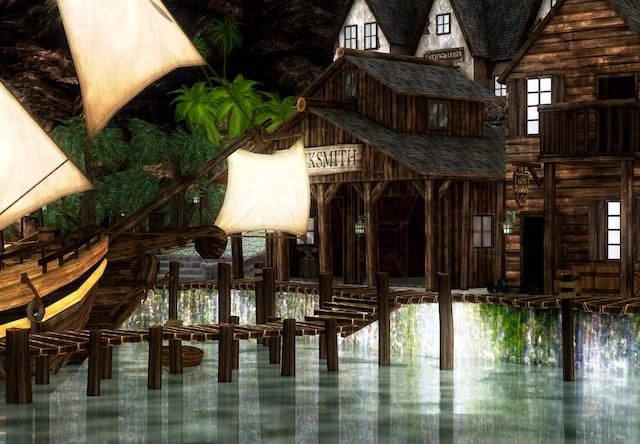
In the Pirates of the Caribbean movie franchise, the pirates were literal immortal ghosts that had no need for the world of mankind. There is a myth that pirates were outcasts and pariahs but like any criminal now or in the past they needed to sell their booty. While pirates did get some gold and diamonds, that was far from their only plunder. Most of what pirates stole and looted was anything that ships had, like water, food, soap, timber, salted fish, and supplies for the New World colonies. The most coveted of all prizes was medicine.
With all these goods pirates needed a place to sell them, and there were plenty of ports, pirate and otherwise that encouraged pirate trade. Often pirates were sanctioned by their home countries, like the English Privateer, and their “letter of marque” gave them the legal right to capture ships from enemy nations. With this they could legally sell their booty to their homeports. Privateering, which was similar to today’s version of military contractors, “spurred the growth of Atlantic cities from Charleston to Dunkirk.” Non-nation criminal pirates had no shortage of middlemen and smugglers who would take their tons of stolen salted fish off their hands and integrate it into the local economy.
9: Wore Jewelry to Improve Their Eyesight
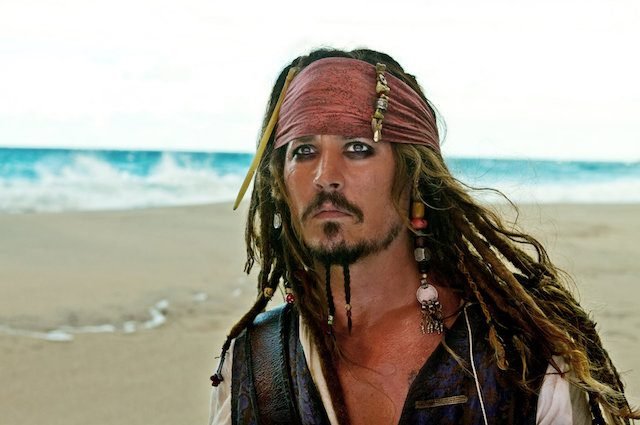
Those brave souls who step off the sturdy earth onto a rickety boat to righteously sail the rough seas have always been a superstitious bunch. Bananas famously are taboo on the open sea and are thought to bring doom upon all those on the boat. Real sailors will quickly throw a banana overboard ASAP. Sailors are just as superstitious with their good luck talismans.
Famously bad luck on land, black cats are a seen as signs of good luck at sea with sailors having a black cat on board. There are even those who have their wives have a black cat at home to get a double dose of good fortune. Pirates were no exception to superstitions of the seas. According to the Journal of the American Optometric Association, pirates heavily pierced their ears in hopes that it would improve their eyesight.
8: Pirate Ships Were Democratic
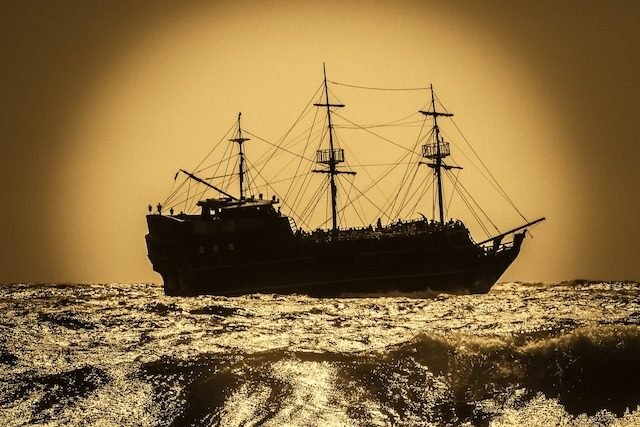
Pirates in the movies are often portrayed as mafias with a head criminal ruling their ship with an iron fist. In real life, pirate ships had surprisingly democratic micro-societies. During the golden age of piracy, over 100 years before democracy took hold in America, sailors on legitimate sailing ships were little more than slaves. The captain controlled everything and in the British Navy, it was even worse. Sailors lived under terrible conditions; conditions so bad that the only way to get new crew members was to pressgang or kidnap innocent people from whatever harbor the ship entered.
This kind of life paled in comparison to pirate ships, where democracy thrived. Not only did pirates share the wealth of their plunder but they voted on everything. They held elections on where to sail, where to strike, what to do with prisoners, and even whether or not to impeach and replace their captain.
7: Pirate Health Insurance

Sailing hundreds of years ago was tough. Piracy, which involved violent resistance and sparse prey, was even tougher. If they weren’t dealing with malnutrition or scurvy pirates had to deal with the normal hazards of the seven seas like storms and new tropical diseases. As outlaws, they also didn’t have a military organization or state to fall back on. Since the pirates were in it together they also banded together forming collectives with health care. If there was an injury on board a ship or while seizing a vessel pirates could depend on each other for monetary support.
In the Caribbean, a pirate group operated that called themselves The Brethren or Brethren of the Coast (they appeared in the Pirates of the Caribbean series). One of the most famous pirate captains of this group was Henry Morgan. Morgan offered the following compensation for injury: a right arm was worth 600 pieces of eight, a left arm 500, a right leg 500, a left leg 400, and an eye 100 pieces of eight. In 1600 one piece of eight was about a modern £50 note, so the pay out for a right arm was 600 pieces of eight, the equivalent of £30,000. Even crazed scourge of the sea Blackbeard cared enough for his crew to seize three French surgeons to provide medical care.
6: Pirates Raided Only Ships… Or Not
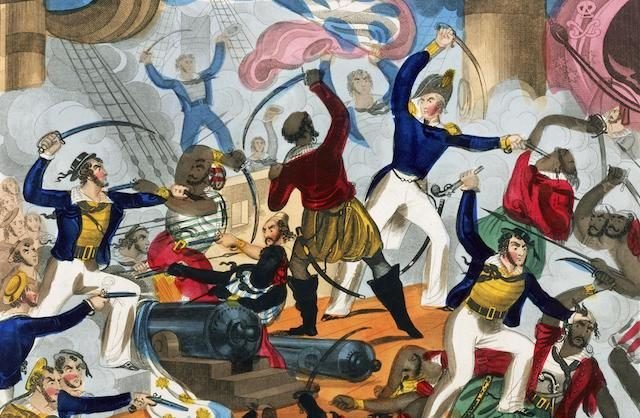
Merriam-Webster says the definition of a pirate is someone who engages in piracy, or an act of robbery on the high seas. Water thefts, according to the dictionary. But the true mavericks they were, pirates didn’t limit themselves to just looting and pillaging on the high seas. No, when they had the means pirates would attack targets on land, too.
There have been a number of invasions by pirates. One pirate warlord, Edward Mansvelt, controlled a 1,000-men strong pirate army that landed and attacked the Spanish in what became known as the Sack of Campeche in 1663 (now a city in Mexico). Pirate Lord Henry Morgan led another Pirate army 50 miles inland to attack Puerto Principe (now Camagüey in central Cuba). If the prize was high enough pirates had no problem leaving their ships to pillage the land lubbers.
5: Pirates Are Not Forever
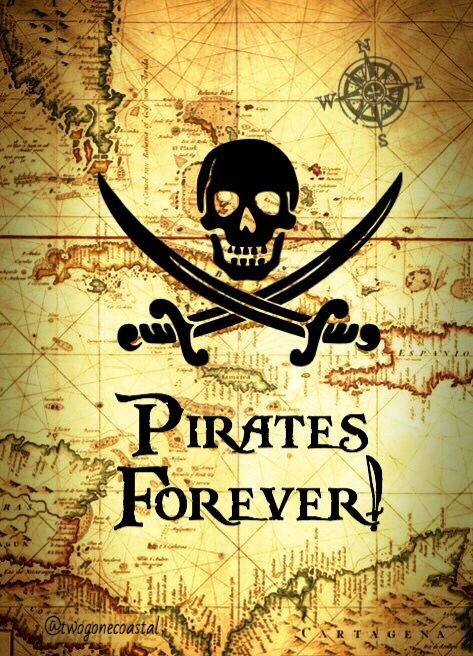
The pirates in Pirates of the Caribbean were doomed to an immortal purgatory sailing the seven seas forever, but real pirates had a less permanent legacy. Piracy was often seen as a way to increase their standing in mainstream society. Spend a few years in a high-risk occupation and then take your plunder and improve you and your family’s position in life.
That was certainly the case with Woodes Rogers (he’s the dapper gent on the right in the above painting). He sailed around the world, paid for from all the ships he plundered along the way. He even had enough time to rescue Alexander Selkirk, the Scottish sailor that Daniel Defoe’s Robinson Crusoe is based on. After he came back home he hung up his pirate standard and became the Governor of the Bahamas. His past didn’t stop him from trying to stamp out local pirates. Not all pirates became politicians, but many parlayed their ill-gotten gains into an easy life back in normal society.
4: Pirate Tropes

Our word for pirate didn’t have a standardized spelling until well into the 18th century. In historical archives ocean raiders, or what we call pirates, were spelled as “pirrot,” “pyrate,” or “pyrat,” which is probably where parrots became an associated pirate trope. Other fictional tropes were that pirates buried treasure, a fiction created by Robert Louis Stevenson’s 1883 novel Treasure Island.
The 1950s Disney movie of the same name also created what we now know as pirate talk. For the film, Robert Newton, the pirate star of Treasure Island used an exaggerated version of his southwestern England hometown West Country dialect. Pirates also didn’t have peg legs, and the skull and crossbones flag was just one of many pirate flags used in pirate history.
3: Cannonballs are Spheres of Death
In the age of sail, the preferred means of attack was the cannon. Modern pirate movies have their share of implausible Michael Bay explosions. They also show how each cannon hit causes thousands of serrated pieces of wood to fly into the fleshy, exposed skin of sailors and pirates alike. Yet compared to their fictional Hollywood movie stars, the pirates of old had one less thing to worry about.
As proven by Mythbusters the wooden shrapnel didn’t have enough velocity to penetrate the exposed skin, or for their test, dead pigs. They did discover, however, the gunpowder explosion of a cannon gave the metal cannonballs enough force to rip through the bodies of at least four people, as demonstrated by the unfortunate pigs that took their place.
2: Pirates Aren’t a Relatively Recent, Caribbean Thing
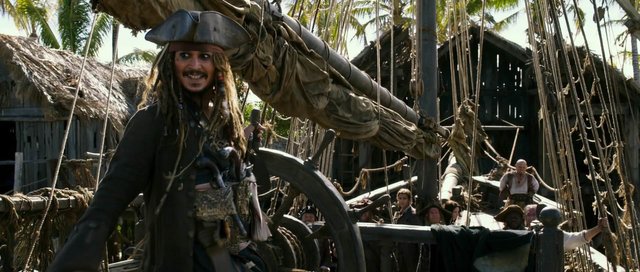
For as long as there has been wealth there have been people that will take that wealth. Robbery and banditry have to be one of the oldest jobs in history, although not the oldest job. That would be ladies of the night. In the same vein of thought, as long as there have been ships there have been people who are willing to take whatever is on that ship. Starting 1200 BC the Egyptians feared a mysterious group of people only known as the “Sea Peoples” that swept over the known world like black death, destroying everything they touched.
Later, in 75 BC, Julius Caesar was kidnapped by pirates while traveling to Rhodes. Upon hearing their ransom demand, Caesar got insulted and told them to double the asking price for his life. The pirates got their money but after he was released Caesar returned with a fleet of ships and captured and crucified every one of his pirate captors. In the Mediterranean, during the 15th and 16th centuries, there were two groups of pirates that were mirror images of each. The Barbary corsairs were Muslims who raided Christian commerce while the Knights of Saint John were Christian pirates who raided Islamic ships, “mirror image[s] of maritime predation, two businesslike fleets of plunderers set against each other.” The official hymn of the United States Marine Corps even has a line, “to the shores of Tripoli” that’s about the Battle of Derna in 1805, where US Marines attacked a pirate stronghold during the First Barbary War. While the west is more familiar with the Pirates of the New World, Pirates are found throughout history and all over the world.
1: Pirates Still Exist

Pirate movies inevitably always focus on pirates with swords and sailing ships, but pirates still exist today. We don’t just mean the infamous Somali pirates that plagued the Horn of Africa a decade ago (although there was recently an attack after five years of no incidents). Pirates on the other side of the Atlantic have stepped up their attacks in places like Nigeria. Even outside of Africa there is piracy; or rather, piracy never went away. In the early 19th century famous Pirate Queen Madame Ching, or Ching Shih, ruled the waves with hundreds of ships, crewed by thousands of pirates. Not far from Madame Ching’s haunt is one of the busiest shipping straits in the world, the Strait of Malacca. Through this 550 mile-long sea lane, thousands of ships travel and are easy targets for modern day pirates.
Dozens of attacks and hijacking take place every year, although coordinated patrols by Indonesia, Malaysia, and Singapore are trying to put a stop to it. Hitting a little closer to home is piracy on Falcon Lake, which straddles the American and Mexican border. The lake is a result of Falcon Dam on the Rio Grande which was built in the ’50s. After the Mexican side descended into the anarchy of the drug wars small boats full of pirates would prey on fishermen and pleasure boats, as well use the boats to smuggle drugs into the US. Piracy is not something that was stamped out hundreds of years ago. It still exists, to this day, even in America’s backyard.
very nice
Piracy !! Really a nice topic !! Although the prevailing concept of this profession is looting, in ancient times piracy has the meaning of courage, rigor and strength in the battle of seas and oceans and the discovery of continents and new worlds.